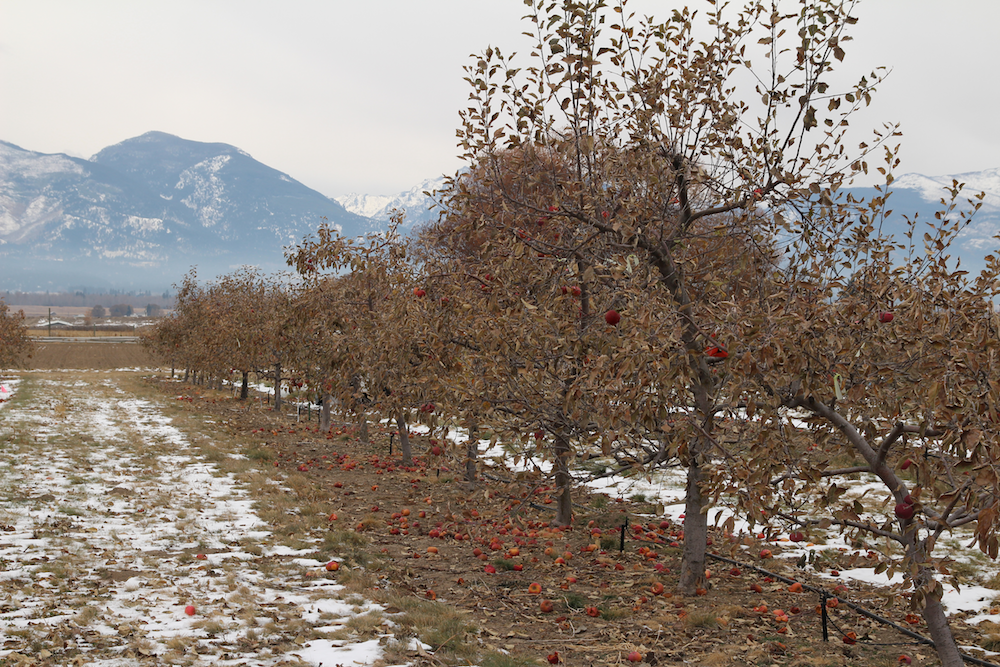Summary of Montana Growing Conditions

Photo 1: 'Cortland' apples potentially damaged by sudden changes in temperature and early frosts (October 2019). Photo credit: Katrina Mendrey.
Montana's climate varies both on a macro and micro scale, making apple trees vulnerable to weather extremes in all seasons. Following is a summary of the various constraints Montana's climate and weather can place on growing apples in the region.
Overall Growing Conditions
Montana has a short growing season with much of the state having only 135 or fewer frost-free days on average. Precipitation is often less than 14", requiring irrigation to grow a successful apple crop. The climate of a site can be evaluated on a macro scale by locating the nearest Agrimet station and reviewing historical weather data to understand max/min temperature, precipitation, occurrence and timing of late-season frosts and other weather-related information influencing plant growth and development. In addition, these maps provide degree-day, precipitation and growing season information and are available through the Montana Climate Office. However, these tools should not be the primary factor in determining a suitable location, as they offer a more regional rather than a localized climate assessment.
Microscale Evaluation
Any site should be evaluated more closely prior to planting to understand the microclimate of the particular landscape. Special attention should be given to frost pockets, sun exposure and prevailing winds for a particular location. More information on site evaluation can be found on the Site Selection page.
Sudden Changes in Temperature
Much of the Intermountain West experiences sudden changes in diurnal temperature which can exceed 40F. These shifts in temperature can be even greater from day-to-day with sudden freezing temperatures, especially in the shoulder seasons. This can be hard on plants as they are entering and breaking dormancy, making them vulnerable to frost damage and winter injury. Photo 1 above provides an example of how an early and fast frost can damage trees before they are fully dormant, by scorching leaves, damaging new growth and potentially killing young trees.
Extreme Weather
Another factor in growing apples in the Intermountain West is the onset of extreme weather throughout the growing season. Hail and strong winds can damage crops and permanently injure trees, especially young ones that can be girdled by hail damage or broken at the graft by strong winds. Understanding the risk of such events at your site can help you better prepare for them and protect your trees from injury when possible. Options might include staking or trellising trees, choosing larger rootstocks, and using netting to protect against hail damage.
Snow Cover
Snow cover through the winter can protect trees roots from extremely low temperatures, but can also lead to sunscald and increased rodent damage on unprotected trees. Snow provides protection and habitat for voles capable of girdling trees by feeding on bark. Additionally, extremely high snow cover can bury protective fencing and trunk wraps that deter feeding by rabbits and other pests. Sunlight reflecting off of snow can also warm trees cells, leaving them susceptible to cold injury when temperatures drop at night. For more information on protecting trees from wildlife and sunscald visit the Early Tree Care page.

